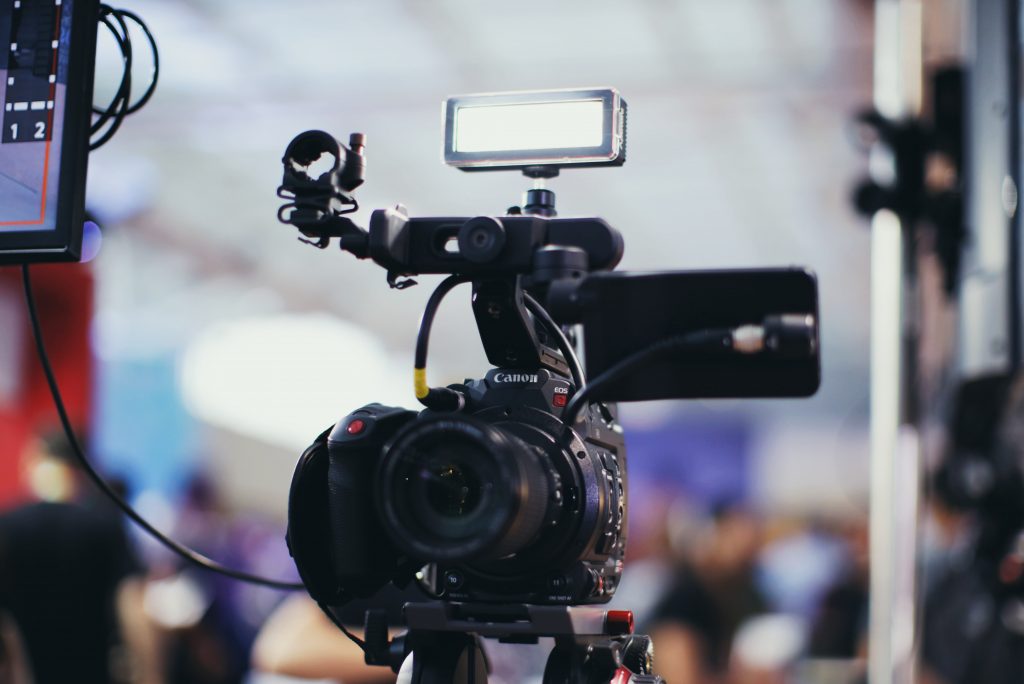Where to Place the Camera? Understanding Perspectives in Writing
People often compare perspective in writing to a film director choosing where to place the camera during a scene.
This is correct in part, but it’s an incomplete understanding of perspectives.
When a writer chooses a perspective, they are setting the stage. It isn’t just placing a camera, it’s also giving directions to the characters, managing the lighting, and adding the background score.
How Perspective is Like a Camera
If you place the camera right, the audience sees what you want them to see.
If you choose the right perspective, the audience sees what you want them to see.
This is a very simple similarity, but it’s important to consider. You need to be conscious in selecting a perspective and a framing for your work.

When you frame a story, what you are doing is providing a central place for the readers to “watch” what is happening. You can, of course, move the camera around, but moving too much and too quickly can confuse your audience and make it more difficult to paint a picture that is meaningful to the readers.
Typically, a writer will stick with a single perspective per chapter, and they’ll keep the form more or less consistent. For instance, a fantasy novel written in third-person perspective and past tense will keep that format throughout the entire book, setting up scenes with a disembodied narrator serving as a “camera” so the reader can follow the action.
It is more common for authors to choose to place their camera in a different place by following a different character in subsequent chapters or scenes, like how a director will typically follow one character or another as they film, but switch focuses between scenes.
Time & Place
We don’t even think about when the narrator moves through time and place in the setting unless the author has drawn our attention to things, much as we rarely think about how a film director moves the camera, but it’s important to be deliberate as a writer about where and when shifts take place.
This is in part because readers don’t think about it, and in part because text doesn’t provide the visual information a director might offer with a time-lapse. The response to this is simple:
If you’re moving in time and place, and that shift is important, highlight it! You don’t need to yammer on about it, but you do need to show something happen.
Leaves change colors and fall from the trees in the six-month time gap. They get on the bus and stand in awkward silence before resuming their conversation about the secret conspiracy when they get off somewhere else. A couple sentences can carry a lot of weight, but they need to be used deliberately.
A consequence of this is that you might need to offset certain events and rewrite scenes with these skips several times to make them clearly apparent to your audience.
But There’s More
When you choose a perspective, you’re giving the reader direct access to your world and characters.
That’s important, because they’re going to be interacting through every sense and drawing their own conclusions for anything you leave out of frame.
When you choose a perspective, you're giving the reader direct access to your world and characters. Share on XDirectors do a lot more than just choosing the location of a camera. They handle stage directions, sets, lighting, and more.
Your perspective carries a lot of these. A stage director doesn’t “accidentally” have things on set, or overlook the impact of where things are relative to each other. You should think of that too.
When your perspective follows a character closely, you’re looking at what they look at to define their personality. Whenever you’re in their head, you focus on what they see. This works the same way that you’d use dialogue to show what’s important to them.
Anything you don’t deliberately include is “out of frame” for the reader.
They’re smart, they’ll fill in the gaps for you. But you need to think about it.
You also need to think about when you don’t want things in frame. How often do you need to describe the ground?
It depends on the significance.
If a character’s walking barefoot through snow because they’re facing hardship or they’re out-of-place or they’re absent-minded, that’s important. You’ll show the ground to emphasize the point you want to make.
Use Your Words
If the reader needs to know what the ground is to visualize the scene, you’ll bring it up. If they’re in a fantasy city, maybe the roads where they are in the outskirts are simply packed dirt. Tie it into something.
One great advantage you have that a film director doesn’t is your ability to use words to your advantage.
In the novel I’m currently working on, Aspects of Sand, I use the road in the outskirts of the city to deliver a flashback to the protagonist’s rural upbringing while also letting readers know that we’re not in the “nice” part of town. These are all elements that get touched on in other ways, but I want to get as much exposition done quickly.
Because I’m in first person, I have to be careful about linking thoughts together. I don’t want the protagonist to come across as a narcissist, so there has to be some clear stimulus for a comparison. Here, she’s very attentive to places and compares them to what she knows because she feels out of place in the city. She links things back to where she’s from to make sense of new stimuli.
When It Doesn’t Work
One downside is that as writers, we can’t roll back film and see what the camera picked up.
Both filmmaking and writing are opaque. A lot of stuff goes on behind the scenes that doesn’t always make it through. Some audience members will catch things that others don’t. That’s fine, it’s part of any creative endeavor.
But when we write, we create visions for other people. If you mess up film (or digital video), it’s usually very clear what went wrong on inspection. We can certainly spot certain flaws in our own writing.
But we’re blind to the perceptions, because we already had the perception. We put the vision onto the page, and when we review it we usually see what we put in.
That’s why it’s important to revise after a delay, and also to get feedback on writing. Directors benefit from having many people around them. Actors, set designers, videographers, and the rest of the crew contribute their own expertise to help bring the vision to life.
If they don’t understand, the director has to help them understand.
As a writer, you need to help your imaginary audience understand your work. Not by explaining it overtly; that would defeat the point of telling a story!
Think about what people need to do to construct their vision of your scene.
Put that together. Give them the tools to point the camera in the right place.
